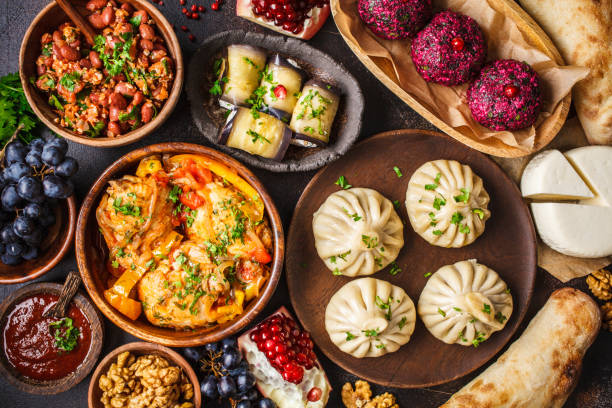Discovering the Vibrant Flavors of Georgian Cuisine
Have you ever thought about diving into the rich and vibrant world of Georgian cuisine? With its unique flavors, traditional cooking methods, and a wide array of dishes, it's a culinary expedition worth taking. In this journey, we'll explore the delicious diversity of this lesser-known culinary gem from the Caucasus region.

A Burst of Flavors: The Staple Ingredients
Georgian cuisine is a gastronomic feast that draws its unique flavors from a variety of staple ingredients. Walnuts are used extensively in sauces and garnishes, while fresh herbs like cilantro, tarragon, and dill add a burst of flavor to many dishes. Pomegranates, a symbol of prosperity, make frequent appearances, lending their tangy sweetness to sauces and salads.
The Art of Bread Making: Khachapuri and Shoti
Any discussion about Georgian cuisine would be incomplete without mentioning its breads. Khachapuri, a cheese-filled bread, is a well-loved staple. Another classic is Shoti, a long, flat bread baked in traditional clay ovens called tone. These breads incorporate age-old baking techniques, offering a testament to the country’s rich culinary history.
A Wine Culture Like No Other
Georgia is often referred to as the birthplace of wine, with its viticulture dating back 8,000 years. Home to over 500 grape varieties, the country’s winemaking tradition is deeply rooted in its culture and lifestyle. The unique Georgian method of fermenting wine in clay vessels, or qvevri, is recognized as a UNESCO Intangible Cultural Heritage.
Delectable Sweets: Churchkhela and Pelamushi
Georgian sweets are as diverse and enticing as their savory counterparts. Churchkhela, a traditional candy made from nuts and grape juice, is often described as Georgian Snickers. Pelamushi, a pudding-like dessert made from condensed grape juice, cornflour, and walnuts, is another must-try.
The Joy of Supra: Georgian Feast Tradition
Georgian cuisine isn’t just about the food; it’s also about the experience. The Georgian feast, or Supra, is a traditional dining experience that combines food, wine, and toasts in an indulgent celebration of life. A Tamada, or toastmaster, leads the Supra, ensuring that the wine keeps flowing and the conversation stays lively.
- Interesting Facts and Tips about Georgian Cuisine:
- Georgian food is often spicy, thanks to the liberal use of spices like blue fenugreek, coriander, and marigold.
- Supra feasts often feature a table laden with dishes, symbolizing Georgian hospitality and abundance.
- The traditional Georgian cheese, Sulguni, is a must-try. It’s often used in Khachapuri.
- Georgia’s Racha region is famous for its honey – another key ingredient in many Georgian dishes.
In conclusion, Georgian cuisine is a culinary exploration that blends unique flavors, traditional cooking methods, and a rich history. Its diverse ingredients, bread-baking artistry, wine culture, and unique sweets all contribute to a vibrant gastronomic palette that is sure to excite any food lover. So, why not step off the beaten path and embark on a culinary adventure to Georgia? It’s a flavorful journey you won’t forget.




